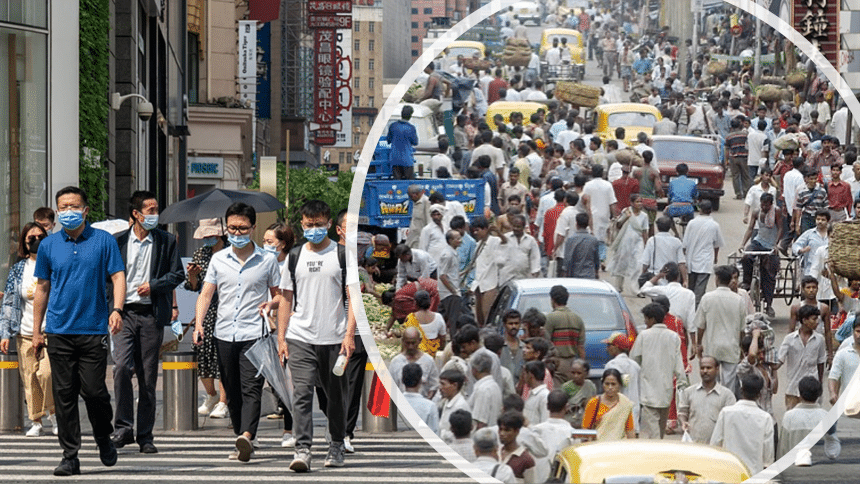According to the United Nations, India will surpass China as the world’s most populous nation next week when its population reaches about 1.43 billion.
“By the end of this month, India’s population is expected to reach 1,425,775,850 people, matching and then surpassing the population of mainland China,” the UN Department of Economic and Social Affairs said.
The milestone would occur by the middle of 2023, according to the UN’s annual State of the World Population report published last week.
India has surpassed China in terms of population due to both significant increase in its own population and a drop in China’s when it reached 1.426 billion people in 2017.
China, which is thought to be the most populous nation in the world since the fall of the Roman Empire in the fifth century CE, is projected by the UN to gradually decline to about one billion people by the end of this century.
Figures for China don’t include Taiwan, Hong Kong, and Macau.
The United Nations has stated that India’s population growth “is virtually certain” to continue in the upcoming decades.
The UN estimates that India would have a population of 1.5 billion by the middle of the next century, while experts emphasized that it might be significantly lower or higher.
China’s demise is closely related to the stringent one-child rule for married couples that it upheld for many years until it was lifted in 2016.
Additionally, the greater cost of living and the increasing number of Chinese women entering the workforce and pursuing higher education are blamed for the slower growth of the country.
At 1.2 births per woman in 2017, China’s fertility rate reached one of the lowest levels ever recorded.
The fertility rate in India, which has taken much longer than China to halt population growth, was 2.0 births per woman, which is barely below the 2.1 replacement level.
However, according to John Wilmoth, director of the Population Division of the Economic and Social Affairs Department, both nations’ fertility rates in 1970 were roughly the same, at little under six births per woman.
“It took three and a half decades for India to experience the same fertility reduction that occurred in China over just seven years during the 1970s,” he said.
According to the UN, the one-child policy in Beijing and India’s poorer human capital investment and slower economic growth during the 1970s and 1980s were two major contributors to the disparity.
According to Wilmoth, the prediction used in the population report from last week, which said that India will overtake China by the middle of the year, was based on data from the previous year.
The prediction made public on Monday is based on more recent data, although Wilmoth emphasized that it is still only a projection.
“The precise timing of when this crossover occurs is not known for sure and it will never be known,” he told reporters.
The two countries must deal with rapidly aging populations.
In addition to facing severe water shortages, air and water pollution, and crowded slums in many of its enormous cities, India faces enormous hurdles in providing electricity, food, and shelter for its expanding population.
The issue facing Prime Minister Narendra Modi to create jobs for the millions of young people who enter the job market each year is highlighted in Surpassing China.
China’s economy is struggling more and more to fill posts due to its aging population.
Beijing said last week that its national strategy is designed “to actively respond to population ageing, promotes the three-child birth policy and supporting measures, and actively responds to changes in population development.”
“China’s demographic dividend has not disappeared. The talent dividend is taking shape, and development momentum remains strong,” said foreign ministry spokesman Wang Wenbin.





